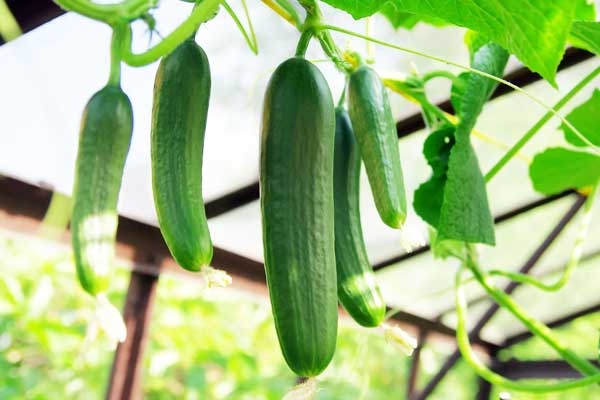Hack to grow Cucumber is going viral for all the Right Reasons
September 11, 2025 14:37
(Image source from: Canva.com)
Our existence has largely moved into the online world, yet the pleasure derived from hands-on tasks is unmatched. The happiness from making things manually still does not have a tech substitute, and this idea also applies to city gardening, along with traditional DIY projects. Armen Adamjan, a well-known online personality, recently shared a simple method for growing cucumbers at home through Instagram. The American-Danish content creator simplifies the method into easy steps that don’t need any special tools. However, this popular video is more than just a passing trend; it taps into fundamental science and an age-old human desire to create, cultivate, and care for plants. To start your cucumber-growing adventure, select a fresh and healthy cucumber. Remove the seeds from it and soak them in water for thirty minutes. Keep the seeds that sink and throw away any that float.
Lay the seeds on a wet paper towel, add a little cinnamon to stop mold, fold it up, and put it in a ziplock bag. Store it in a warm and dark area, such as above the oven, and within two to three days, the seeds will start to sprout. After they sprout, plant them in soil and cover them with the top of a cut plastic bottle to create a humid environment. Place it in a sunny location and monitor their growth. Adamjan’s method is based on the biology of seeds and dormancy. Healthy cucumber seeds are dense due to their developed embryos. When they are soaked in water, the good seeds sink, while hollow, immature, or bad seeds float. The floating seeds are still inactive, but when set on a moist paper towel, they receive steady moisture and oxygen, which helps break dormancy. Cinnamon serves as a natural antifungal to avoid mold problems as the seeds begin to sprout. The suggestion to keep the seeds in a dark area, like underneath or above the oven, mimics the warm and dark conditions of real soil, aiding in breaking dormancy and speeding up germination.
During this time, seeds build roots and shoots, which later help them take in nutrients from the earth. At this point, the young plant needs proper attention because it is still fragile. This is where the humidity dome is beneficial. It keeps moisture around the seedling, creating a warm and humid little environment that prevents it from drying out and supports healthy development. This method represents a tiny version of urban gardening. It fulfills more of the mental satisfaction we derive from engaging in activities rather than simply producing a large harvest. But why does it feel so rewarding? This feeling can be explained through the concept of creative process satisfaction—the notion that using our hands to create something tangible and alive gives us a sense of purpose, control, and achievement. A study from 2020 in the Journal of Occupational and Organizational Psychology highlighted that hands-on tasks like gardening, crafting, or cooking establish a direct connection between effort and results, which is fulfilling psychologically.
Some organizations are now adding planting to their therapy programs. The University of North Carolina, for example, explains that "therapeutic horticulture" offers advantages like learning new skills, expressing creativity, stimulating the senses, enhancing thinking and understanding, gaining a sense of achievement and personal fulfillment, connecting with life spiritually, and boosting mental well-being.
In a similar vein, research published in Ecological Applications (Soga, Gaston & Yamaura, 2017) revealed that getting hands dirty with gardening greatly improved emotional control and strength, particularly for those dealing with high levels of stress. Therefore, even if these methods seem trivial, they can lead to significant improvements in your life, especially as the overload of technology separates us from nature. This approach is not just for cucumbers; many common fruits and veggies can be cultivated using similar methods, such as tomatoes, bell peppers, and chili peppers. Just take the seeds, cleanse them, and sprout them on a moist paper towel.
There are also alternatives that are somewhat alike but require more time, like lemons, oranges, squash, and various melons like cantaloupe and honeydew. These plants need particularly warm and humid environments, which means you'll need to be patient and put in extra effort.








